Repostería Selecta, 3rd ed. (1950)
Repostería Selecta. México: Academia de Cocina y Repostería “Velázquez de León,” 1950. [TX716.M4 V4578 1950]
Josefina Velázquez de León was born in 1899 to well-to-do and and socially prominent parents on their ranch near Aguascalientes. She was trained by her mother in French cooking, but also learned the value of frugality in the kitchen during the Mexican Revolution. Widowed after a brief marriage, Velázquez de León supported her family by establishing a cooking school in their Mexico City home, where she provided instruction both in classical European techniques and traditional Mexican dishes.
Velázquez de León began writing cookbooks in the late 1930s with great success. Her first book, Manual Práctico de Cocina y Repostería (Practical manual of cooking and pastry), went through five editions. Over her lifetime, she went on to publish 150 cookbooks, several of which we’ve featured in previous posts.
This month, I’d like to highlight another of Velázquez de León’s popular cookbooks. First published in 1938 in three volumes, Repostería Selecta provides detailed instruction in baking and confectionary. Pictured here is the cover image from the third edition, which appeared in one volume in 1950 and is held in UTSA’s Mexican Cookbook Collection.
The book is divided into six sections. Part I introduces the ingredients, measurements, and temperatures used in baking, as well as common terminology. When discussing ingredients, Velázquez de León specifies what types of confectionery they are suitable for. For example, under “grasas” (fats), she notes that butter should be used for cakes and glazes, but lard is preferable for certain breads and pastries.
Part II focuses on doughs that rise, within which she includes yeast breads, puff pastry, breakfast breads, fried pastries, and cookies.
Part III shifts to pies, tarts, petit fours, and cakes – both pastelitos fantasia and pasteles practicos (fancy cakes and practical pastries).
Part IV branches out to non-flour based desserts, including flans, puddings, and gelatins.
Part V moves into the realm of edible decoration, with recipes for sugar sculpture, fondant, almond paste, and more.
Part VI provides additional instructions and suggestions on decorating, including sugar-based flowers, fondant figurines, and even churches or other structures.
Plates showing elaborately decorated desserts are scattered throughout the book, which is particularly notable as it was published during a time period when color illustrations in cookbooks were relatively novel. Enjoy the pictures and stay tuned next week for some of the recipes behind the icing!
Bibliography:
Pilcher, Jeffrey. “Josefina Velázquez de León: Apostle of the Enchilada.” The Human Tradition in Mexico. Wilmington, Delaware: Scholarly Resources Inc., 2003. Pp. 199-209. [F1226 .H85 2003]


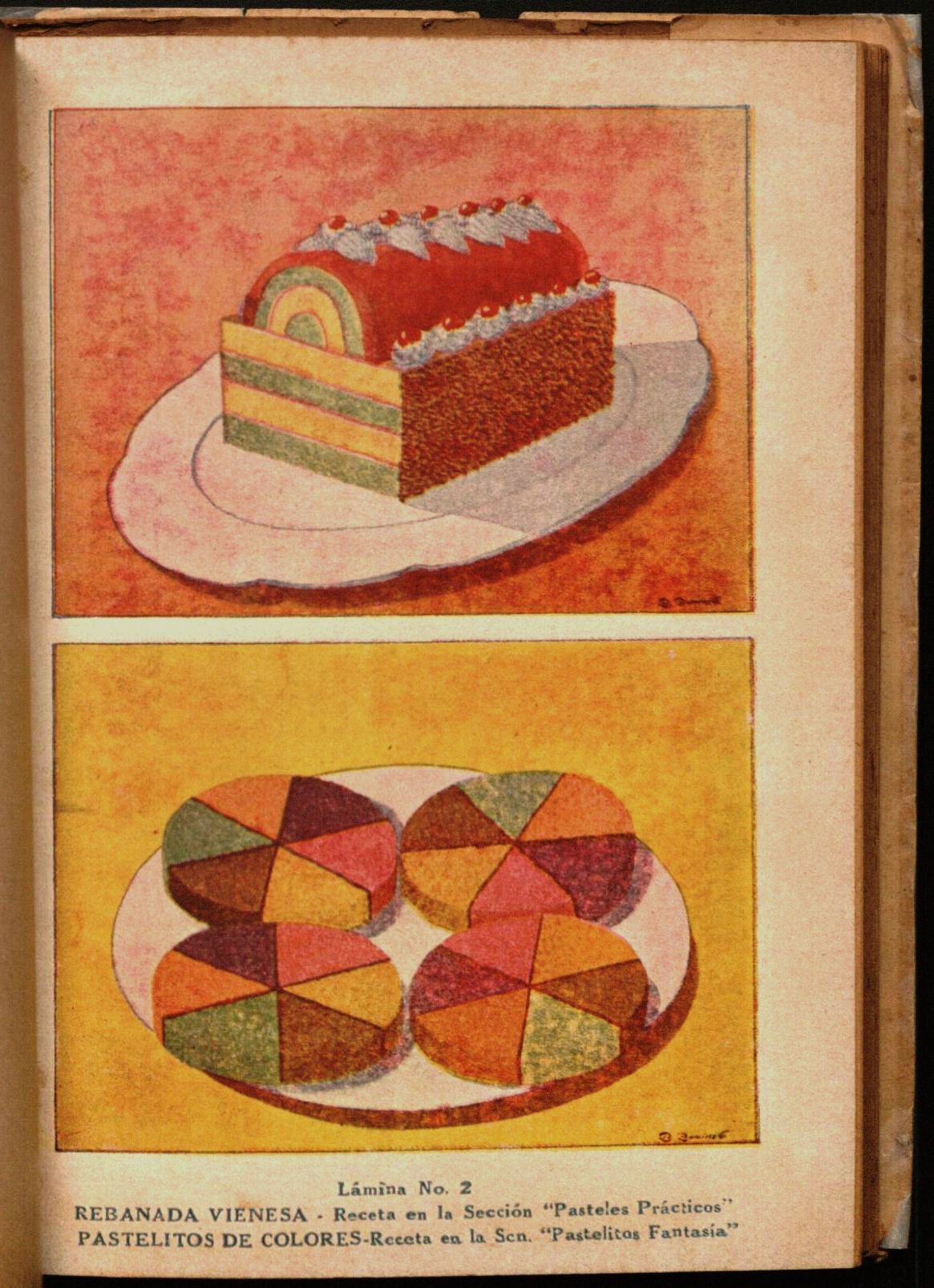
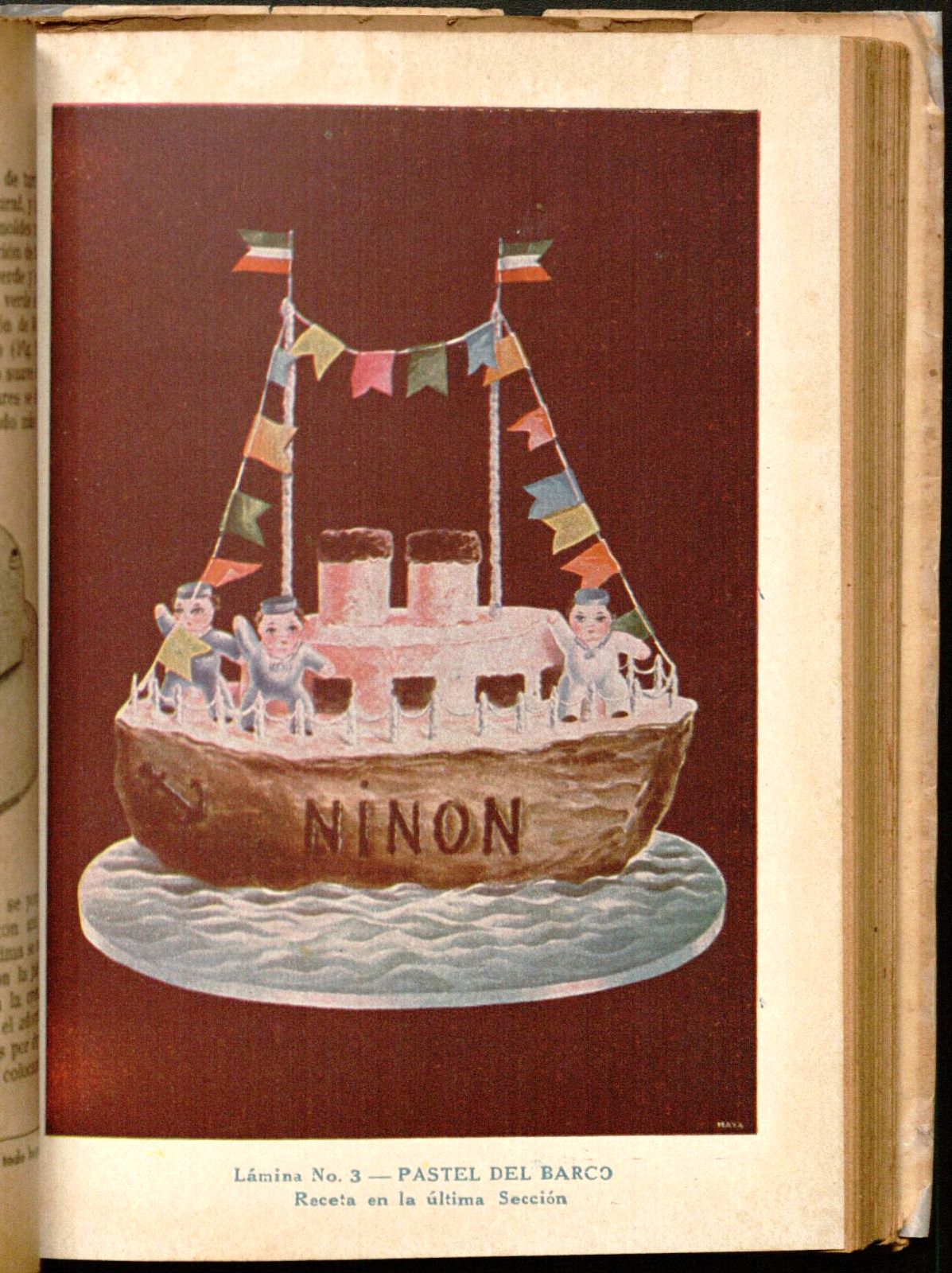
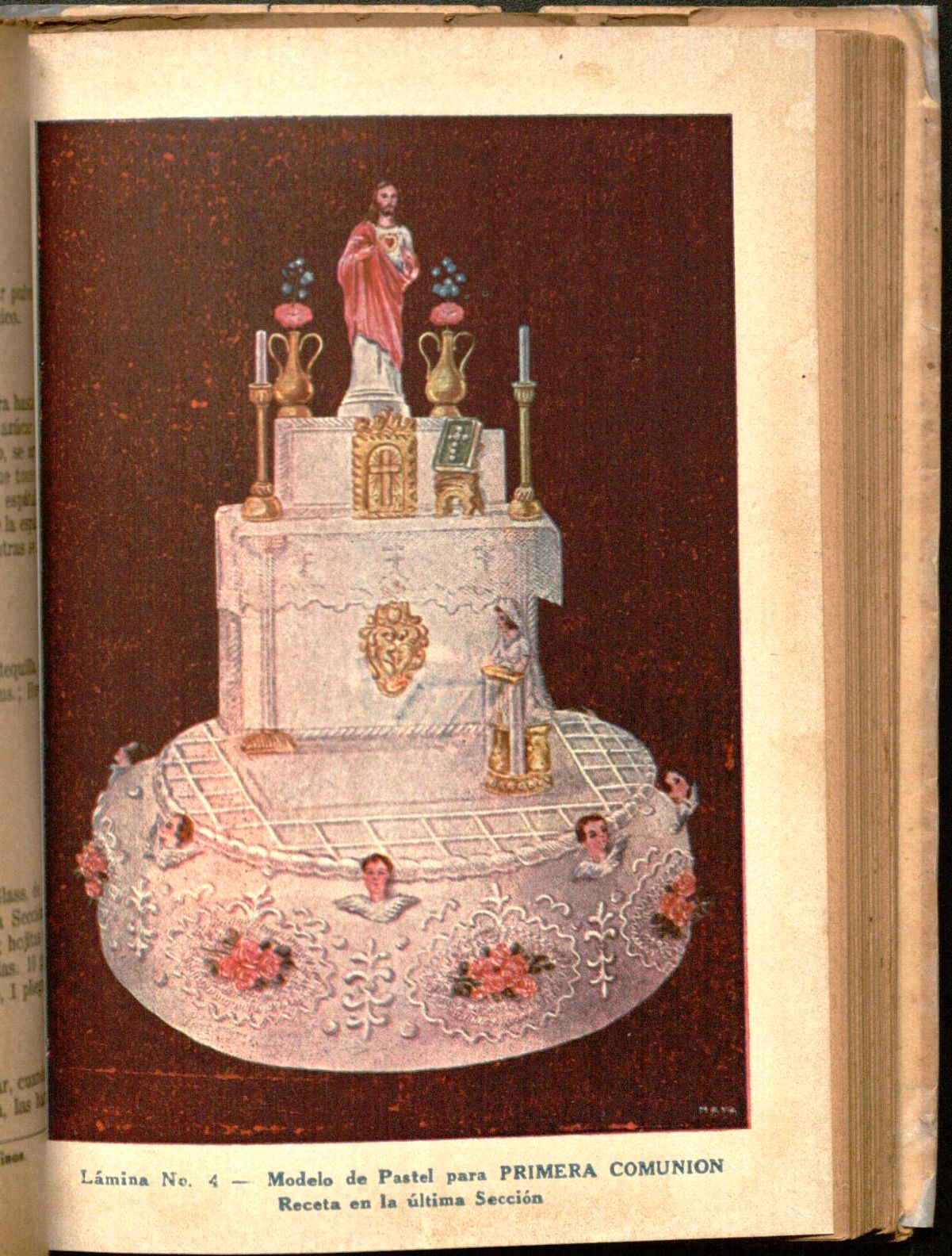

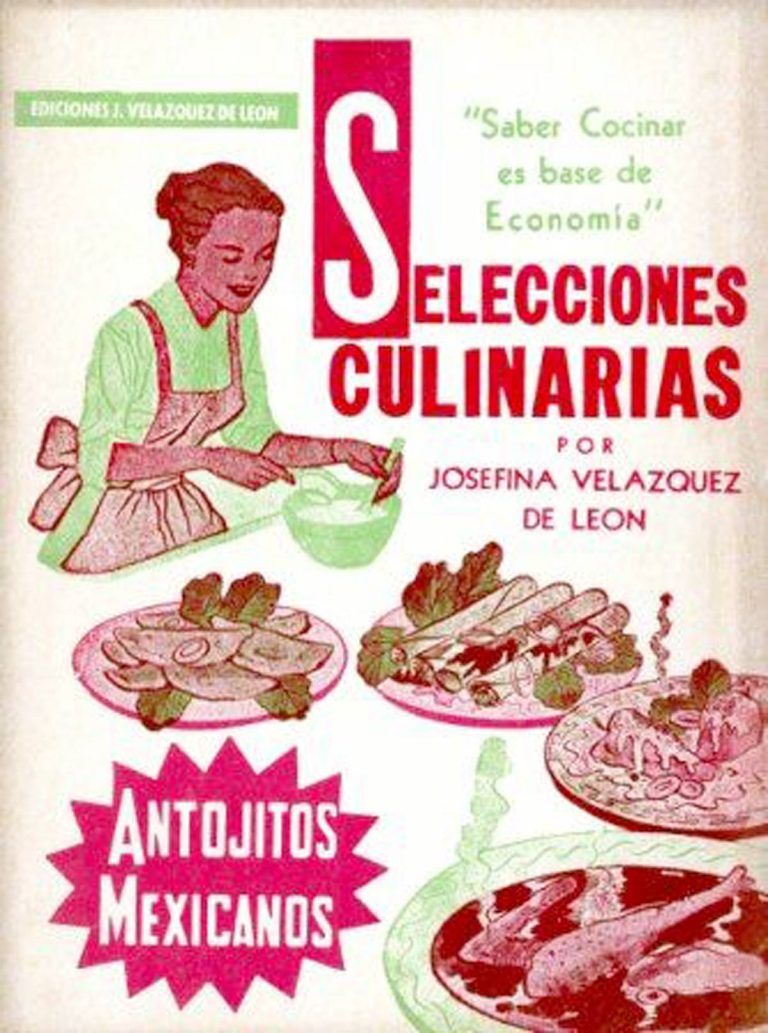
![Reposteria (1919) by Julia Sánchez Rangel. [TX773.S26 1919] UTSA Libraries Special Collections.](https://lacocina.utsa.edu/wp-content/uploads/2013/03/pasteldecoco1.jpg)
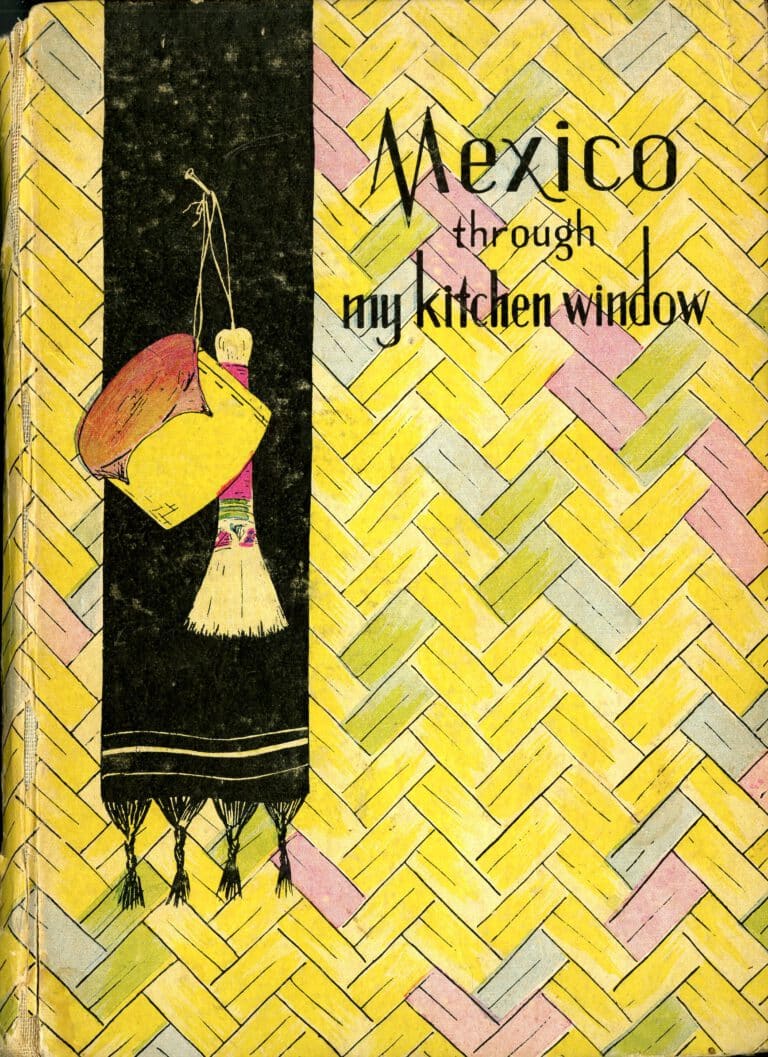
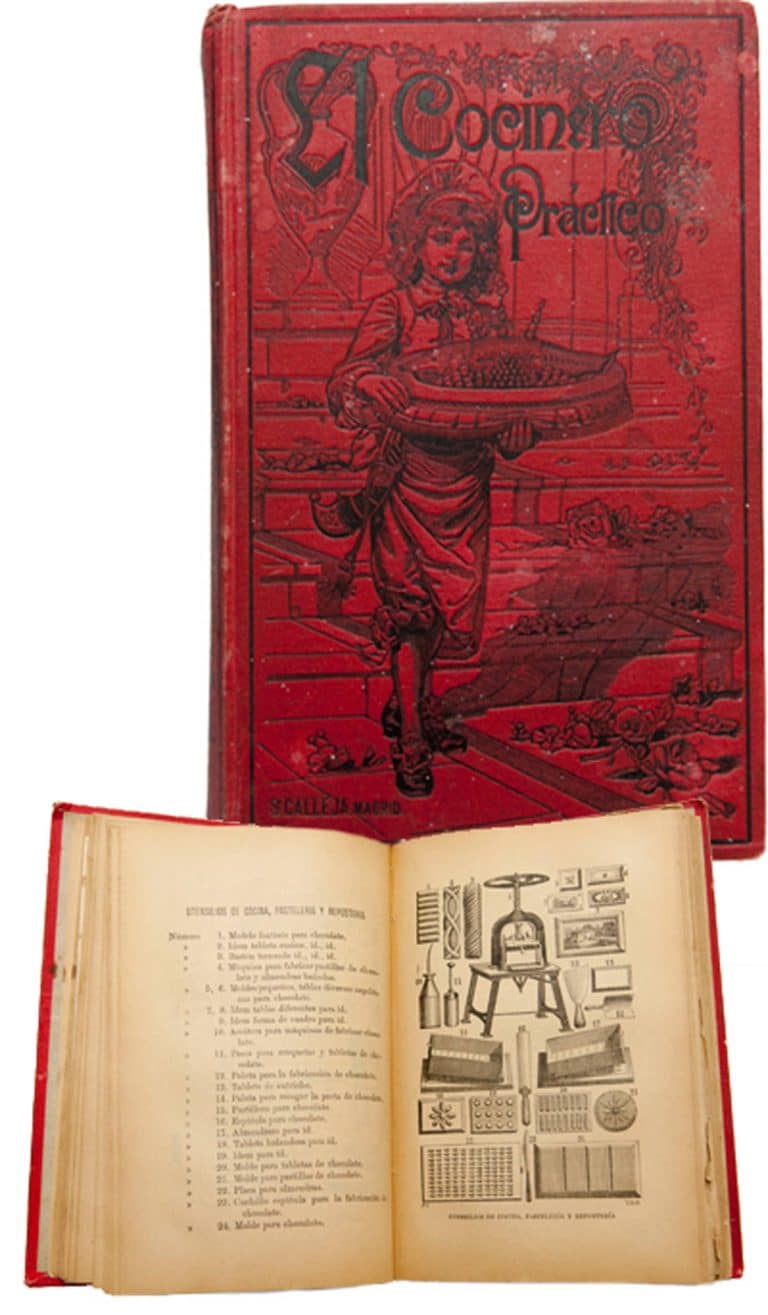
![México: Tierra de Antojitos [1960s].](https://lacocina.utsa.edu/wp-content/uploads/2013/06/txsau-tx716-m4-w338-1960-insert_001-768x1052.jpg)

in cleaning out my mother in law’s home i found the following cookbook by josefina velazquez de leon titled practica de decorado de paasteles en 100 lecciones….all in spanish…just wondering if this is a rare book?? she recently died at the age of 87